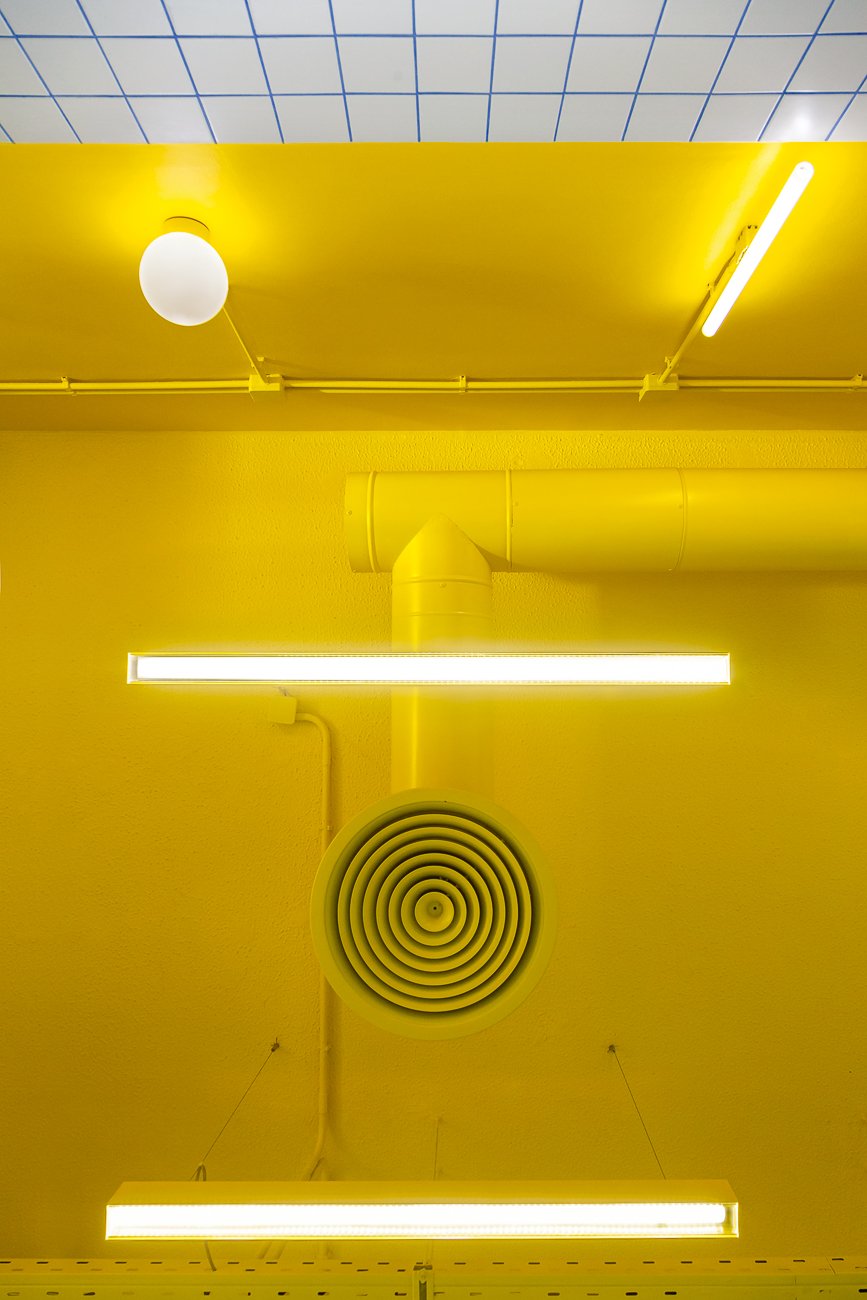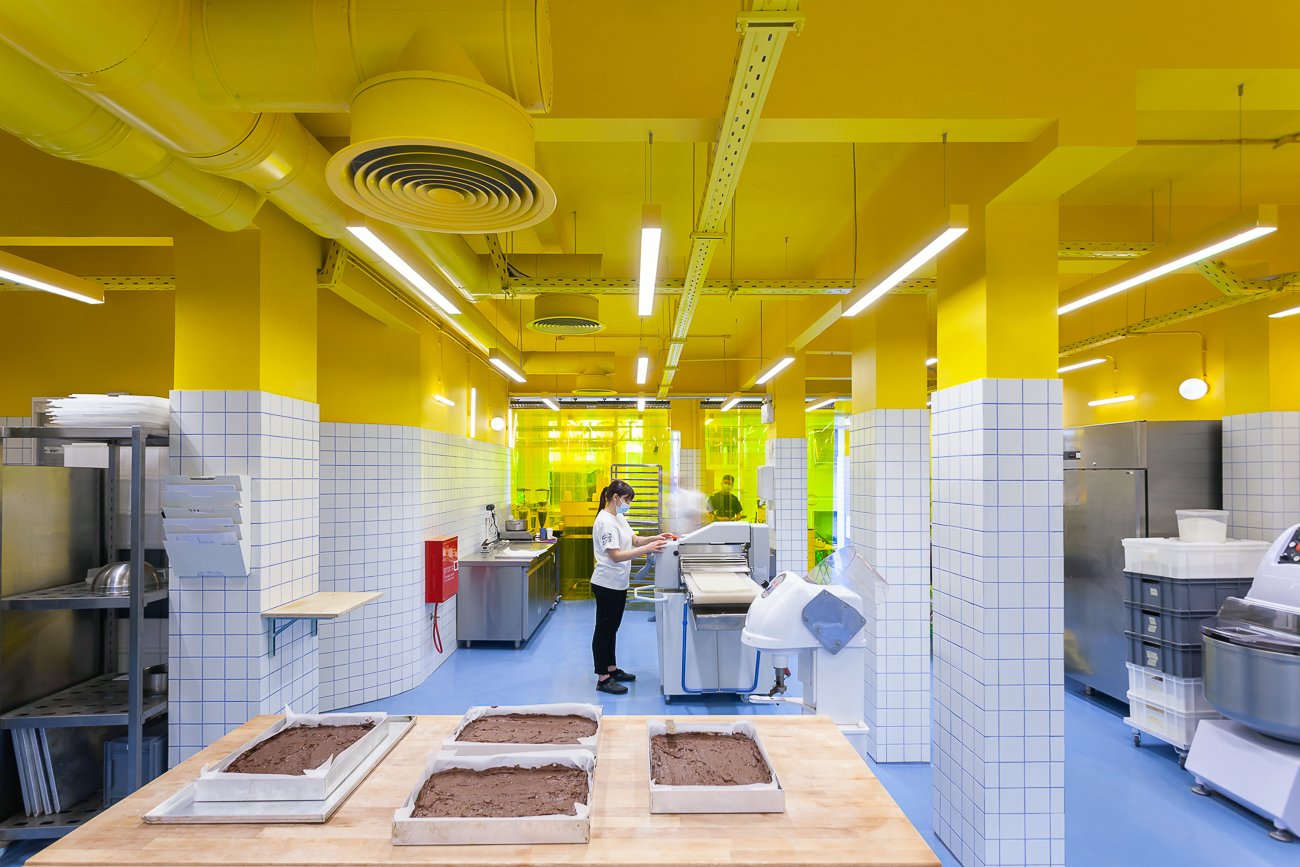
April 19, 2021
Kora Reinterprets the “Important Institution” of the Traditional Athenian Bakery
Designed by local firm en-route-architecture-, the sunny, tiled outpost makes baking processes visible to customers.
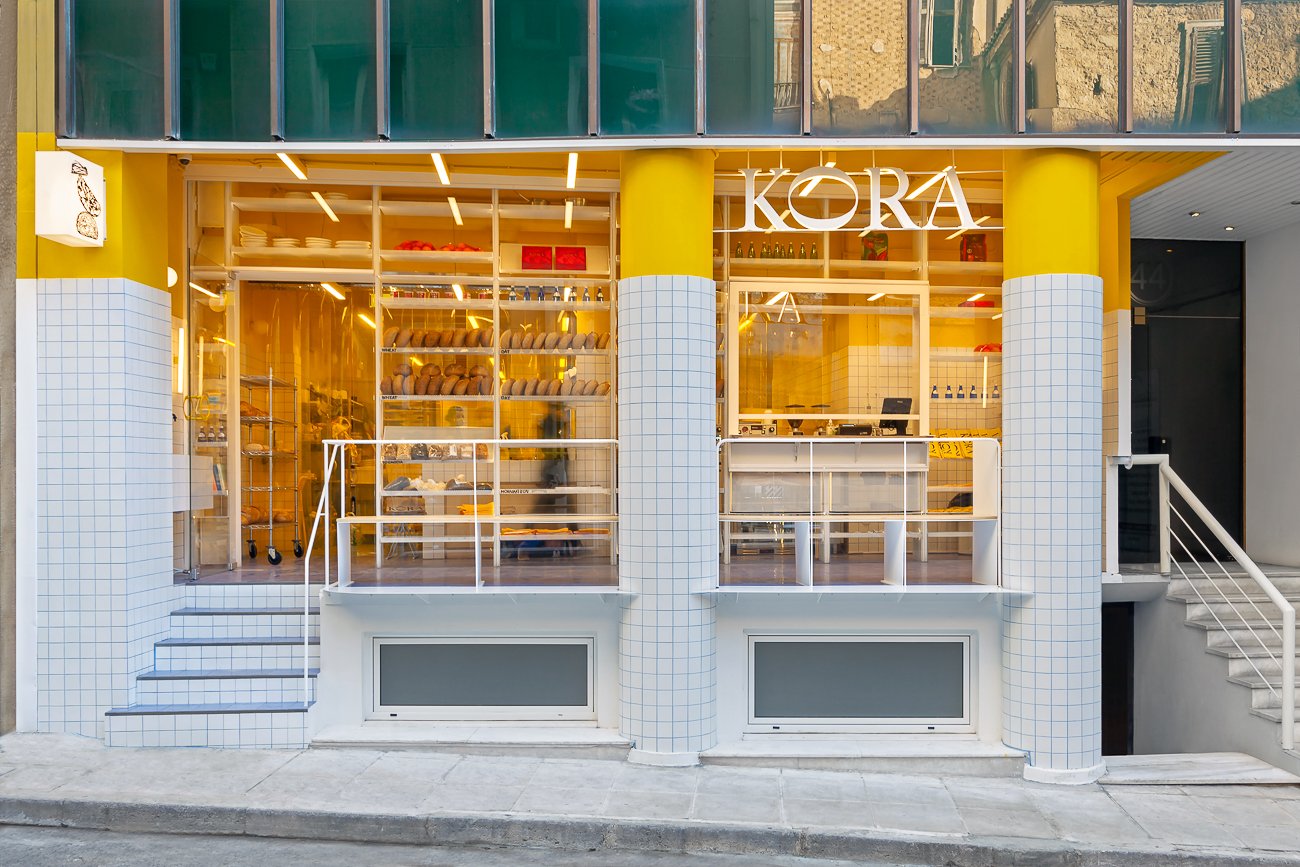
Katerina Kourkoula and Hannes Livers Gutberlet of en-route-architecture- (e-r-a-) suggest we meet at lunchtime and it’s immediately clear why. In the hour or so that we spend at Kora bakery, the latest project by the Athens-based pair, there is a near-constant stream of customers picking up sourdough loaves and fresh croissants from a COVID-safe serving window. “The typical neighborhood bakery creates a hub in Athens,” says Kourkoula “It’s still the place where everyone goes and knows each other, it’s still an important institution.”
Kora, which means “crust” in Greek, opened just before Christmas and is located on the edge of the well-heeled central neighborhood of Kolonaki. The bakery greets the street with fresh-faced white tiles laid atop two sharp yellow columns. Behind these, a short terrace draws in peckish neighbors before a recessed glass facade where the crusty wares are given full prominence.
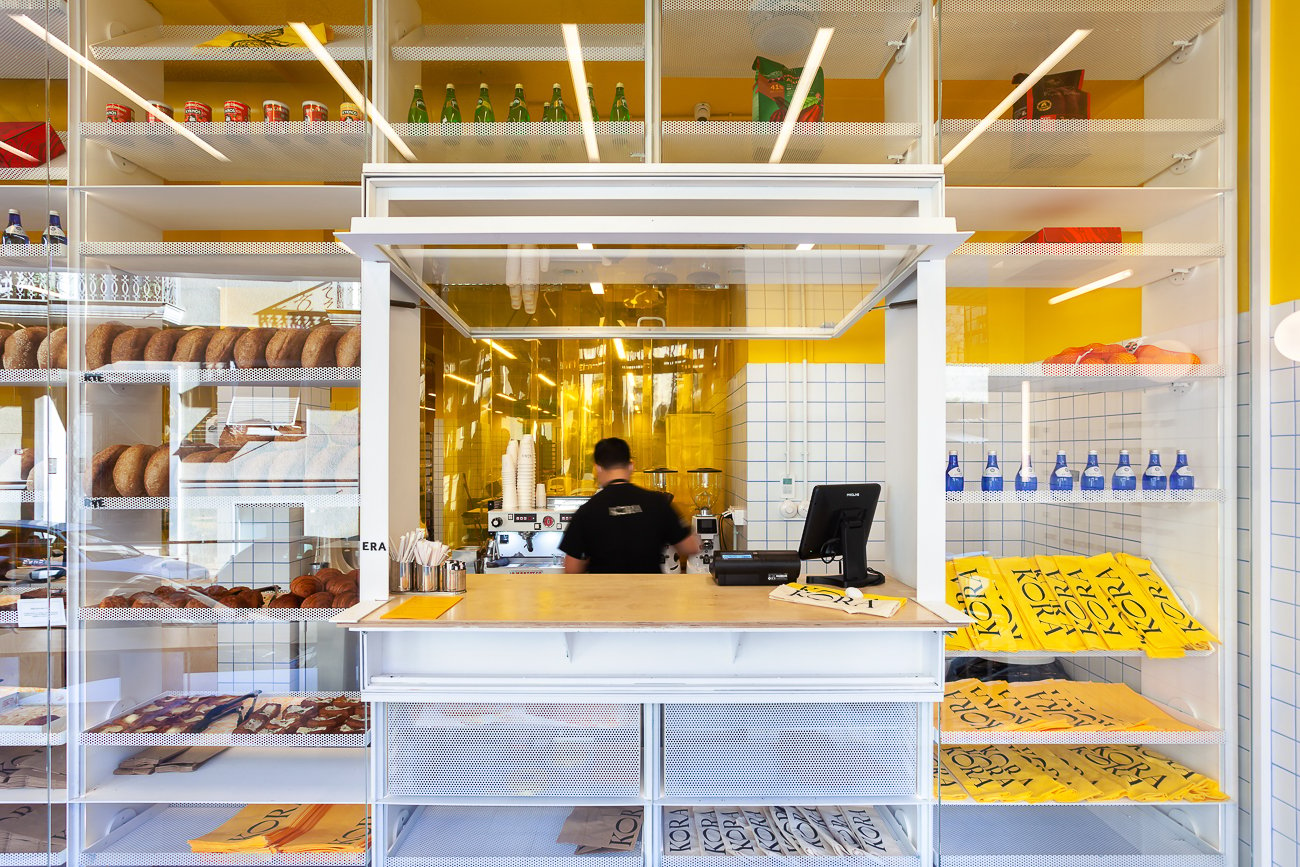
“We wanted it to be kind of like a museum,” explains Maria Alafouzou, who began looking for a site for the bakery with her business partner, pastry chef Ianthis Michalaki, in 2019. e-r-a- were brought in early on in the process and became closely involved in the search.
“I think we have a good eye, aesthetically, but we definitely went into this thinking [e-r-a-] would be translating our ideas into a space,” says Alafouzou. “We needed it to be functional, we needed our machinery to fit in, we needed a display that wouldn’t appear empty even as we started to sell out.”
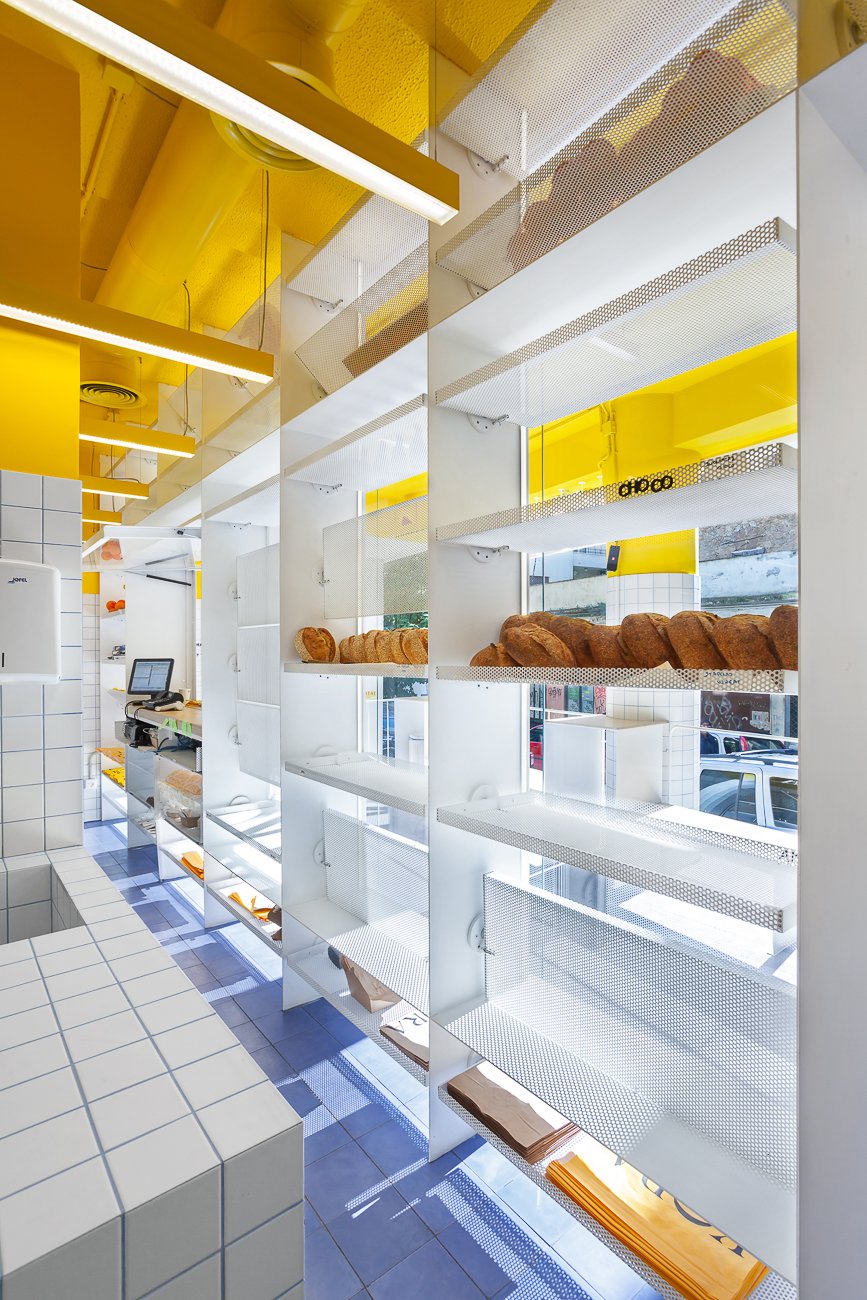
In response, the architects designed a system of shelves that can be rotated towards the facade and act like screens when emptied. It’s a neat detail that creates a continuously changing frontage and contributes to the project’s focus on the dynamic processes behind the production of bread. Beyond the facade and customer service area, the weighing of flour and rolling of dough on wheeled work counters are fully visible to the queuing public, separated only by plastic strip curtains which provide temperature control.
The exterior tiles run continuously from the street to the back of the kitchen and from floor up to a hygienically mandated height of two meters. Above the tiles, the same yellow covers an exposed ceiling that makes the space’s mechanical functions as visible as its culinary ones. For the architects, the decision to highlight the baking processes is a reaction against the design of typical bakeries in Athens. “Baking wasn’t considered a very high-profile job, it was something hidden in the back,” says Kourkoula. “But there’s a lot of artistry, not only here, but with every baker. We wanted to glorify that.”
You may also enjoy “Gigi’s Brings Intimacy and Comfort to Post-COVID Dining”
Would you like to comment on this article? Send your thoughts to: [email protected]
Register here for Metropolis Webinars
Connect with experts and design leaders on the most important conversations of the day.



